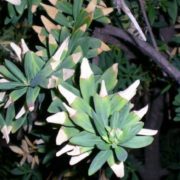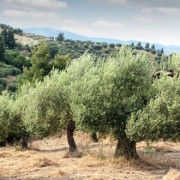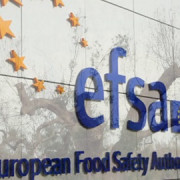Transmission of Xylella fastidiosa by naturally infected Philaenus spumarius (Hemiptera, Aphrophoridae) to different host plants
ORIGINAL CONTRIBUTION
D. Cornara (a), V. Cavalieri (b), C. Dongiovanni (c), G. Altamura (b), F. Palmisano (c), D. Bosco (d), F. Porcelli (a), R. P. P. Almeida (e), M. Saponari (b)
First and second authors equally contributed to the work
(a) DiSSPA-UNIBA Aldo Moro, Sez. Entomologia e Zoologia, Bari, Italy; (b) CNR Istituto per la Protezione Sostenibile delle Piante, Sede di Bari, Bari, Italy; (c) Centro di Ricerca, Sperimentazione e Formazione in Agricoltura ‘Basile-Caramia’, Locorotondo, Bari, Italy; (d) DISAFA – Entomologia, Università degli Studi di Torino, Grugliasco, Torino, Italy; (e) ESPM, University of California Berkeley, Berkeley, CA, USA
Abstract
The recent establishment of Xylella fastidiosa subspecies pauca in the southern Italian region of Apulia threatens agricultural crops and the environment. Olive is an important and widespread ancient crop in Italy and, so far, the most impacted host. The meadow spittlebug Philaenus spumarius (Hemiptera, Aphrophoridae) has been identified as a vector of X. fastidiosa in southern Italy; this species is one of the most common potential vectors in Europe. To generate disease management strategies, data on X. fastidiosa transmission by P. spumarius are necessary. Therefore, we carried out transmission experiments by using field-collected spittlebugs in 2014 and 2015 (5 and 11 collection dates, respectively), and transferring groups of insects immediately on to recipient plants. Various host plant species were tested: olive, oleander, sweet orange, grapevine and the stone fruit rootstock GF677 (Prunus persica × Prunus amygdalus). Xylella fastidiosa was detected in all the host plants after insect plant access except for grapevine; infections to sweet orange and stone fruit were not systemic. In 2015, estimates of insect X. fastidiosa infectivity were obtained; the number of PCR-positive P. spumarius on each plant was positively correlated with the plant infection status. The proportion of P. spumarius infected with X. fastidiosa ranged from 25% to 71% during the entire survey period. The number of X. fastidiosa cells detected in P. spumarius heads ranged from 3.5 × 10 to 4.0 × 102 (CFU equivalents), which is lower than that reported for leafhopper vectors in the Americas. These data show that field-collected P. spumarius have high rates of X. fastidiosa infection and are competent vectors.
Published on October 25, 2016 by JOURNAL OF APPLIED ENTOMOLOGY







